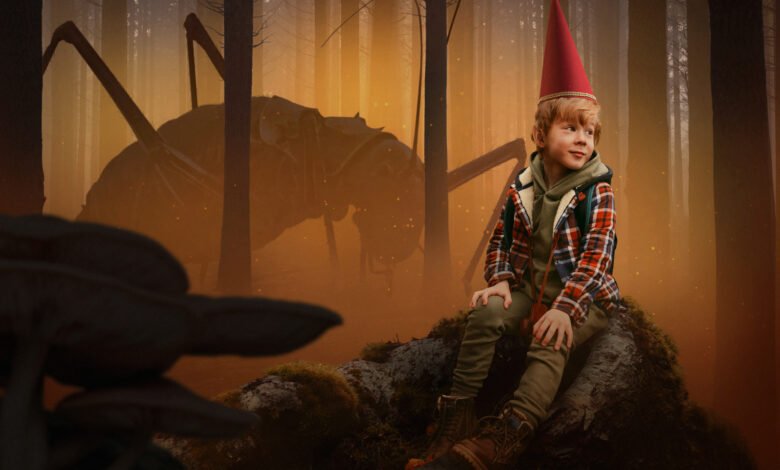Chameleónovité: The Masters of Disguise and Their Hidden World

The family Chamaeleonidae, known in many languages as “chameleónovité,” represents one of the most unique and captivating groups of reptiles on our planet. Often reduced to the singular trick of changing color, these ancient creatures are far more complex than popular culture suggests. They are living marvels of evolutionary adaptation, equipped with ballistic tongues, stereoscopic eyes, and prehensile tails. This article delves deep into the world of chameleons, exploring the incredible biology and behavior that make them true wonders of the natural world.
1. An Evolutionary Marvel: The Origins and Diversity of Chameleons
The story of chameleons begins millions of years ago, with their ancestors diverging from other lizard groups. Today, they are primarily found in the Old World, with their highest diversity and endemism concentrated on the island of Madagascar, which is home to nearly half of all known species. From the rain forests of Madagascar and the mountains of Yemen to the savannas of mainland Africa and even parts of southern Europe and the Middle East, chameleons have colonized a surprising range of habitats. This geographical spread has led to an astonishing variety of forms and sizes, from the minuscule Brookesia nana, which can comfortably perch on a fingertip, to the imposing Parson’s chameleon, which rivals a house cat in size. Each species is a finely tuned instrument, perfectly adapted to its specific ecological niche, whether it be the thorny brush of a dry desert or the dense, humid canopy of a tropical rainforest.
2. Beyond Camouflage: The True Purpose of a Chameleon’s Color Change
The most famous chameleon trait is, without a doubt, its ability to change color. However, the common belief that they do this solely to blend into their background is a significant oversimplification. While camouflage is certainly one function, particularly for evading predators, color change serves a far more complex set of communications. A chameleon’s skin is a dynamic billboard for its emotional and physiological state. Specialized cells called chromatophores—containing yellow and red pigments, reflecting cells for blue and white, and melanophores for brown and black—work in concert to create the stunning displays. A dominant male will flare into brilliant, contrasting colors to assert his territory and intimidate rivals, while a submissive or frightened individual will often shift to dull, dark hues. Females use color to signal their receptiveness to mating or, conversely, to reject advances. Furthermore, color changes are influenced by temperature, light, and humidity, with a chameleon often turning dark to absorb more heat in the morning and lighter to reflect it during the heat of the day.
3. Built for the Hunt: The Ballistic Tongue and 360-Degree Vision
The chameleon is a highly specialized predator, and its entire body is engineered for the silent, motionless ambush of insect prey. Two of its most remarkable tools are its tongue and its eyes. The chameleon’s tongue is a biomechanical masterpiece. It can be longer than the chameleon’s own body and is launched with incredible speed and accuracy. Muscles contract to load energy into a specialized accelerator muscle, which, when released, projects the tongue tip (which is a sticky muscular pad) towards its target at accelerations faster than a fighter jet. The entire process, from launch to retraction, happens in a fraction of a second. Complementing this weapon is its unique visual system. Their eyes are housed in conical turrets that can move independently, giving them a full 360-degree arc of vision without moving their head. This allows them to scan for prey and predators simultaneously. When they spot a potential insect, they swivel both eyes forward to achieve stereoscopic, depth-perceiving vision, calculating the exact distance needed for a perfect tongue strike.
4. A Life in the Trees: Anatomy and Behavior
Chameleons are quintessential arboreal creatures, and every aspect of their morphology supports a life spent in the trees. Their feet are zygodactylous, meaning they are divided into two fused groups of two and three digits that oppose each other, forming perfect pincers for gripping branches with a vicelike grip. Their prehensile tail acts as a fifth limb, constantly coiled around branches for stability and balance, and unlike many other lizards, it cannot be regenerated if lost. Their movement is a slow, deliberate, swaying gait that mimics a leaf shaking in the wind, further enhancing their camouflage from both prey and predators. They are largely solitary animals, coming together only to mate. Their social interactions are a quiet drama of color displays, slow-motion posturing, and occasional aggressive clashes between males, all communicated through their magnificent and ever-changing skin.
5. Conservation: Threats to the Masters of Disguise
Despite their incredible adaptations, chameleons are facing severe threats worldwide. Habitat destruction due to deforestation and agricultural expansion is the most significant pressure, fragmenting the specialized environments they depend on. The exotic pet trade also takes a heavy toll, with many species being illegally captured and trafficked, often suffering high mortality rates in the process. Furthermore, their high specialization makes them exceptionally vulnerable to climate change, as even minor shifts in temperature and humidity can disrupt their delicate physiological balance. Many chameleon species are now listed as threatened, endangered, or critically endangered. Conservation efforts are focused on habitat protection, combating illegal wildlife trade, and establishing successful captive breeding programs for the most at-risk species to ensure these masters of disguise do not vanish from their natural homes.
FAQ About Chameleons (Chameleónovité)
Q: Do chameleons make good pets?
A: They are considered advanced pets and are not recommended for beginners. They have very specific and demanding requirements for lighting, temperature, humidity, and enclosure setup. They are also prone to stress and require a diet of live insects. Prospective owners must undertake extensive research.
Q: Can a chameleon change to any color or pattern?
A: No. A chameleon’s range of color change is limited by its species and the natural pigment cells (chromatophores) in its skin. A species with naturally green skin cannot turn bright red or purple. They can only shift within the color palette they biologically possess.
Q: How long do chameleons live?
A: Lifespan varies by species. Smaller species may live 2-3 years, while larger species like the Veiled or Panther chameleon can live 5-8 years in captivity with excellent care.
Q: Do chameleons drink water?
A: Yes, but in a specific way. Most chameleons will not recognize a standing water bowl. They prefer to drink water droplets from leaves, so their enclosures must be misted several times a day, or they require a drip system.
Conclusion
The chameleon family, Chameleónovité, is a profound testament to the power and creativity of evolution. They are far more than just color-changing lizards; they are sophisticated hunters, solitary acrobats, and delicate communicators whose survival is intricately tied to the health of their often-fragile ecosystems. To understand a chameleon is to look beyond the myth of camouflage and appreciate a creature perfectly sculpted by time for a life of quiet observation in the treetops. Their continued existence, however, hinges on our willingness to recognize their vulnerability and act to preserve the incredible biodiversity they represent.



